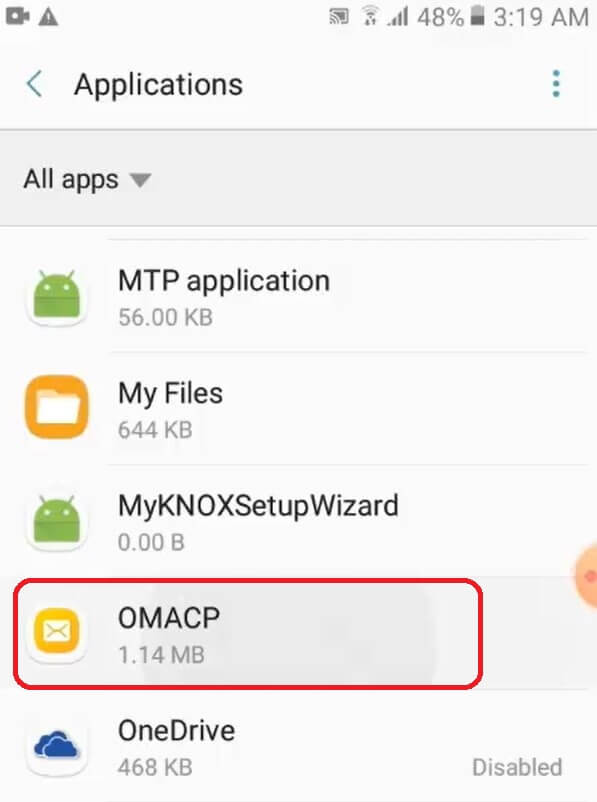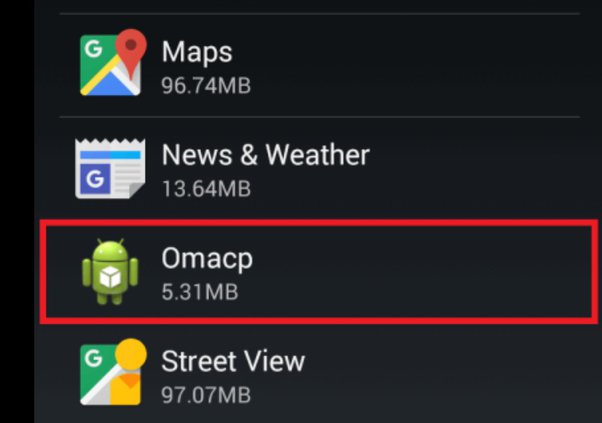OMACP Meaning: A Comprehensive Guide
Have you ever come across a notification on your mobile with the title ‘OMACP’ and wondered what it means? You are not alone. OMACP is a pre-installed system app that is found on several Android devices. However, there have been instances where it has caused concern among users due to viruses or malware attacks.
In this comprehensive guide, we will cover everything you need to know about OMACP – what it is, why it is pre-installed on your device, whether it’s a system app or virus, and how to remove it from your device if necessary. We will also provide tips on how to protect your Android device from OMACP attacks and other malware or virus infections. Read on to learn more!
What is OMACP?

OMACP stands for “Open Mobile Alliance Client Provisioning.” It’s a set of protocols and standards developed by the Open Mobile Alliance (OMA) to facilitate the remote configuration and management of mobile devices, including smartphones and other mobile devices. It allows for the automatic configuration of various settings on your device, such as internet and messaging app settings. OMACP is an application used to configure cellular activity in smartphones with MediaTek processors.
Why Does My Mobile Have OMACP Preinstalled?
The primary cause for the presence of OMACP on your phone is MediaTek, the company behind its development. As previously mentioned, devices equipped with MediaTek processors tend to come with the preinstalled OMACP app.
There are two potential explanations for this:
- Your phone’s processor is from MediaTek.
- It’s possible that your phone originates from China. Chinese phones are less prevalent in other nations, making it probable that the inclusion of OMACP is due to the processor being used.
Is OMACP a System App?

OMACP is indeed a system app on Android devices. It plays a crucial role in managing device configuration and is considered an integral part of the operating system. You can easily find it listed among other system apps on your device.
Is OMACP a Virus?
No, OMACP is not a virus. Nevertheless, certain antivirus programs have labeled it as malware. This is due to the potential for OMACP to be exploited for unauthorized purposes, such as installing tracking software or unwanted applications on your device without your awareness or permission.
What causes OMACP attacks on Android?
OMACP attacks on Android devices can occur due to various factors, often involving malicious intent or vulnerabilities in the system. Some potential causes of OMACP-related security issues include:
- Malicious Exploitation: Cybercriminals can exploit the functionality of the OMACP protocol to remotely install unwanted or malicious applications on a device without the user’s knowledge. This can lead to unauthorized access to sensitive data, tracking, or other harmful actions.
- Vulnerabilities in OMACP Implementation: If there are vulnerabilities in how OMACP is implemented on a specific device or by a particular manufacturer, attackers may find ways to manipulate the system and compromise the device’s security.
- Phishing Attacks: Attackers might use phishing techniques to trick users into accepting OMACP settings that lead to the installation of harmful applications or unauthorized changes to device configurations.
- Malware Distribution: OMACP can be exploited to distribute malware by pushing malicious configuration settings that result in the installation of harmful apps or the redirection of users to malicious websites.
- Unsecured Networks: OMACP attacks can occur when a device connects to unsecured or compromised networks, allowing attackers to intercept and manipulate the configuration messages sent between the device and provisioning servers.
- Outdated Software: If the device’s operating system, firmware, or OMACP implementation is not up to date, it might have unpatched security vulnerabilities that attackers can exploit.
Are You Affected by the OMACP Android Virus?
Having OMACP on your phone doesn’t indicate that your android phone is affected by virus. Nonetheless, if you’re worried about potential OMACP-related risks, you can explore options like deactivating the app or consider rooting your phone to remove it.
How to Detect OMCAP Virus-Infected Apps on App Manager?
If you want to know if an app has a problem with OMACP, check the list of apps in the App Manager and watch out for these signs:
- Apps you didn’t put there yourself.
- Apps with weird or strange names.
- Apps you just added recently.
- Apps that use a lot of data or make your battery go down quickly.
- Apps that make your phone slow.
If you see any of these types of apps on your phone, it might have a problem with OMACP. You should get rid of those apps as soon as possible to keep your phone safe and working well.
How to Check if My Phone Has OMACP?

There are two methods to determine if your phone has OMACP installed. The first involves checking your list of apps: if you see an app named OMACP or Open Mobile Alliance Client Provisioning, then your phone has OMACP.
The second approach involves accessing your Phone settings. Navigate to ‘About Phone‘ and tap it. Locate ‘Build Number‘ and tap it seven times, enabling Developer Options on your phone.
After enabling Developer Options, return to the main Settings page. Scroll down and find ‘Developer Options.’ Tap it and continue scrolling to locate the ‘OMACP Client Provisioning‘ option. If it’s active, your phone has OMACP.
To remove OMACP, the primary method is to root your phone and then delete the app. If you prefer not to root your device, you can attempt to deactivate the app via Settings and Developer Options.
In Developer Options, locate ‘OMACP Client Provisioning‘ and deactivate it. This halts the app from functioning in the background and utilizing device resources.
Should I Remove Omacp Android?
It is not recommended to remove OMACP Android as it is a legitimate system app responsible for managing device settings. Removing it may disrupt the functionality of your Android device. While some apps might claim to be related to OMACP, it is crucial to be cautious as these could be malicious or unwanted apps that can impact the performance and battery life of your device.
How to Remove OMACP Virus from Android Device?
To remove the OMACP and potential viruses and malware from your Android device, it is important to take certain steps.
Root Explorer
Here’s a step-by-step method for you:
- Download and install a Root Explorer app like Es File Explorer on your phone.
- Grant root permission to the app when asked.
- Open Root Explorer and navigate to the /system/private-app/OMACP folder.
- Inside this folder, you’ll find a file called “OMACP.apk.” Choose this file and delete it.
- Done! Now restart your phone, and the app will be completely removed.
Titanium Backup
Titanium Backup stands as one of the top backup apps for Android, offering strong capabilities. It not only backs up apps and data but also enables the removal of system apps without requiring root access. If you’d rather not root your phone, here’s how you can go about it:
- Download and install Titanium Backup onto your phone.
- When asked, grant the app root permission.
- Navigate to the “Backup/Restore” section and choose the OMACP app.
- On the next page, tap on “Delete all data.”
- Confirm the warning and the app will be removed.
- You’re all set. Simply restart your phone, and the app will be permanently gone.
How to Protect Android from OMACP Virus?
Protecting your device from the OMACP virus doesn’t require complex actions. Just follow these simple tips:
- Stick to trusted app sources like the Google Play Store for downloads.
- Don’t install apps from unknown or untrusted sources.
- Avoid clicking on links or attachments in suspicious emails.
- Ignore unsolicited texts or calls.
- Keep your system and software updated.
- Use strong passwords for your devices and online accounts.
- Be cautious with public Wi-Fi networks.
- Regularly back up important data.
Why my mobile is showing an OMACP notification?
The OMACP notification on your mobile is a common occurrence when your mobile network operator updates certain settings or configurations. It is not necessarily a sign of a virus or malware infection. However, if the frequency or content of the notification seems suspicious, it’s worth investigating further. Scan your device for potential malware or consult with your mobile network operator for clarification. Stay vigilant about your device’s security.
Conclusion
In conclusion, if you encounter an OMACP virus on your Android device, it is important to take immediate action to protect your data and device. Follow the steps mentioned above to detect and remove the virus from your device. It is also advisable to transfer your important data to the cloud and regularly check for any malicious apps on your device.
To protect your Android device from OMACP virus attacks in the future, make sure to only download apps from trusted sources, keep your device’s operating system and apps up to date, and install an antivirus app for added security. By following these tips, you can ensure the safety and security of your Android device.



